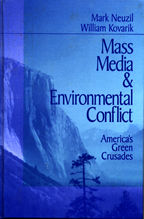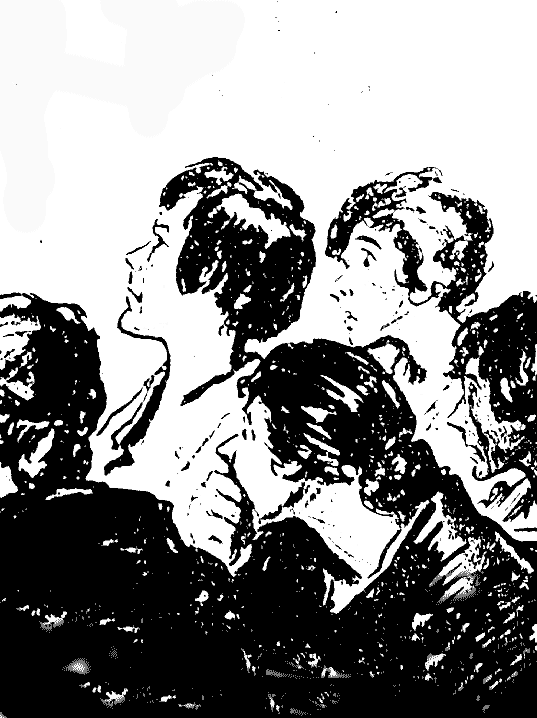 Questions about the impact of vitriolic political debate, including incitement to violence, are often found in media history. Possibly the most infamous episode was William Randolph Hearst’s call for the assassination of President William McKinley in 1900.
Questions about the impact of vitriolic political debate, including incitement to violence, are often found in media history. Possibly the most infamous episode was William Randolph Hearst’s call for the assassination of President William McKinley in 1900.
Historical perspective helps us understand the reaction to the Jan. 8, 2011 attack on Arizona Congresswoman Gabrielle Giffords, in which six people were killed and a dozen others, including the Congresswoman, were seriously injured.
Strong rhetoric during political campaigns, including calls for “second amendment (gun rights) remedies,” along with graphics depicted Giffords district an a “target” of the “tea party,” were seen as inciting the perpetrator.
For example, Fox News’ Glen Beck said this on June 9, 2010:
(American Democrats) believe in communism. They believe and have called for a revolution. You’re going to have to shoot them in the head. But warning, they may shoot you. They are dangerous because they believe. Karl Marx is their George Washington. You will never change their mind. And if they feel you have lied to them — they’re revolutionaries. Nancy Pelosi, those are the people you should be worried about.
And on Feb. 27, 2011, House Speaker John Boehner kept up the heated rhetoric by saying:
We’ve given [public employees] a machine gun and put it right at the heads of the local officials and they really have their hands tied.
Under US legal tradition, even the most disgusting, unpleasant, sharp and caustic remarks are protected by First Amendment. (For those who have taken a media law class, you might recall the New York Times v. Sullivan decision of 1964).
In US history, the most controversial incident of media incitement to violence involved newspaper publisher William Randolph Hearst and his calls for the assassination of William McKinley during the election of 1900. McKinley was running for a second term in office with a new vice president (Theodore Roosevelt). During the campaign, Hearst’s New York Journal and other newspapers set up a drum-beat of extreme political criticism. At one point the Journal labeled McKinley “the most hated creature on the American continent” and said:
“If bad institutions and bad men must be got rid of only by killing, then the killing must be done.”
A similar call for McKinley’s assassination was seen in a doggerel poem written by a then-famous writer named Ambrose Bierce. (To understand the poem, note that William Goebel was elected governor of Kentucky and mortally wounded as he took office in February 1900. The extent of the assassination plot was never uncovered. Also, a “bier” is a platform for a coffin).
The bullet that pierced Goebel’s breast
Can not be found in all the West;
Good reason, it is speeding here
To lay McKinley on his bier.
So when McKinley actually was assassinated in September of 1901, Theodore Roosevelt and his cabinet members personally blamed Hearst for McKinley’s assassination. Speaking of the incident later, Senator Lewis Schwellenbach said the attacks were “the most cowardly in all the sordid career of journalism which that man (Hearst) has pursued.”
Hearst was never criminally charged in the McKinley assassination, but he was widely discredited, and this ruined his political ambitions. The controversy trailed him for the rest of his life. It was one reason why Orson Wells thought he was such an inviting target when he produced “Citizen Kane” some 40 years later.
There are many other incidents of strong media rhetoric or grossly misleading images that seemed to justify violence in media history. For example, the 1915 film “Birth of a Nation” falsely depicting African Americans during the Reconstruction era in the worst possible light. The film apparently triggered a wave of lynchings.
“Media-promulgated stereotypes of various and diverse groups of people cause harm in both direct and indirect ways by presenting oversimplified, mostly negative, and often deceptive depictions,” said historian Paul Martin Lester. The 1998 murder of a gay University of Wyoming student, Matthew Shepard, is often seen as one example of the impacts stereotypes can have.
The problem is hardly confined to the United States. Crimes against humanity are nearly always preceded by campaigns of hatred in the mass media. When the Nazis took over Germany in the 1930s, for instance, some of the most infamous films and newspaper articles in history directly targeted Jewish people.
One newspaper was Der Stürmer, which specialized in crude, vivid and vicious antisemitism. “Jewish murder plan against Gentile humanity” was one particularly virulent headline. The only solution, Der Stürmer often said, was “the extermination of the people whose father is the devil.” The newspaper was published between 1922 and February, 1945, after which its editor, Julius Streicher, was sentenced to death for crimes against humanity at the Nuremberg War Crimes Tribunal in 1946. The Tribunal said his advocacy of murder and extermination “clearly constitutes persecution on political and racial grounds … a crime against humanity.”
Nothing like Der Stürmer was seen again on the world scene until the newspaper Kangura, published in Rwanda in the early 1990s, openly advocated genocide of Tutsi people. In 1994, an estimate 800,000 were killed by Hutus at the urging of Kangura and Radio Rwanda. Kangura’s editor, Hassan Ngeze, along with broadcast colleagues, was convicted of crimes against humanity by the International Criminal Tribunal for Rwanda and sentenced to life imprisonment, re-affirming the international legal principle that leaders of the mass media organizations can be held responsible for inciting genocide.
While the level of political rhetoric in the United States in recent decades has been heated, it has certainly not approached the Der Stürmer or Kangura level of incitement.
Nevertheless, many people feel that the bright red line between political rhetoric and open incitement to violence has been smudged, if not crossed, by cross-hairs on political districts; by calls for “Second Amendment remedies” against liberals in Congress; by gun-toting extremists at political rallies; and by politicians who “take aim” against liberals in their televised campaign ads.
Clearly, the climate of violent rhetoric in the US accelerated in the Obama years. Whether or not the Tucson massacre of 2011 was directly connected, there is an historical connection between violent rhetoric and violent acts.
In an age when ordinary people have to express extreme views to get media attention, there is a need to advocate more peaceful rhetoric. One place to start is Marshall Rosenberg’s ideas about nonviolent communication.

 Revolutions in Communication
Revolutions in Communication Mass Media & Environmental Conflict
Mass Media & Environmental Conflict